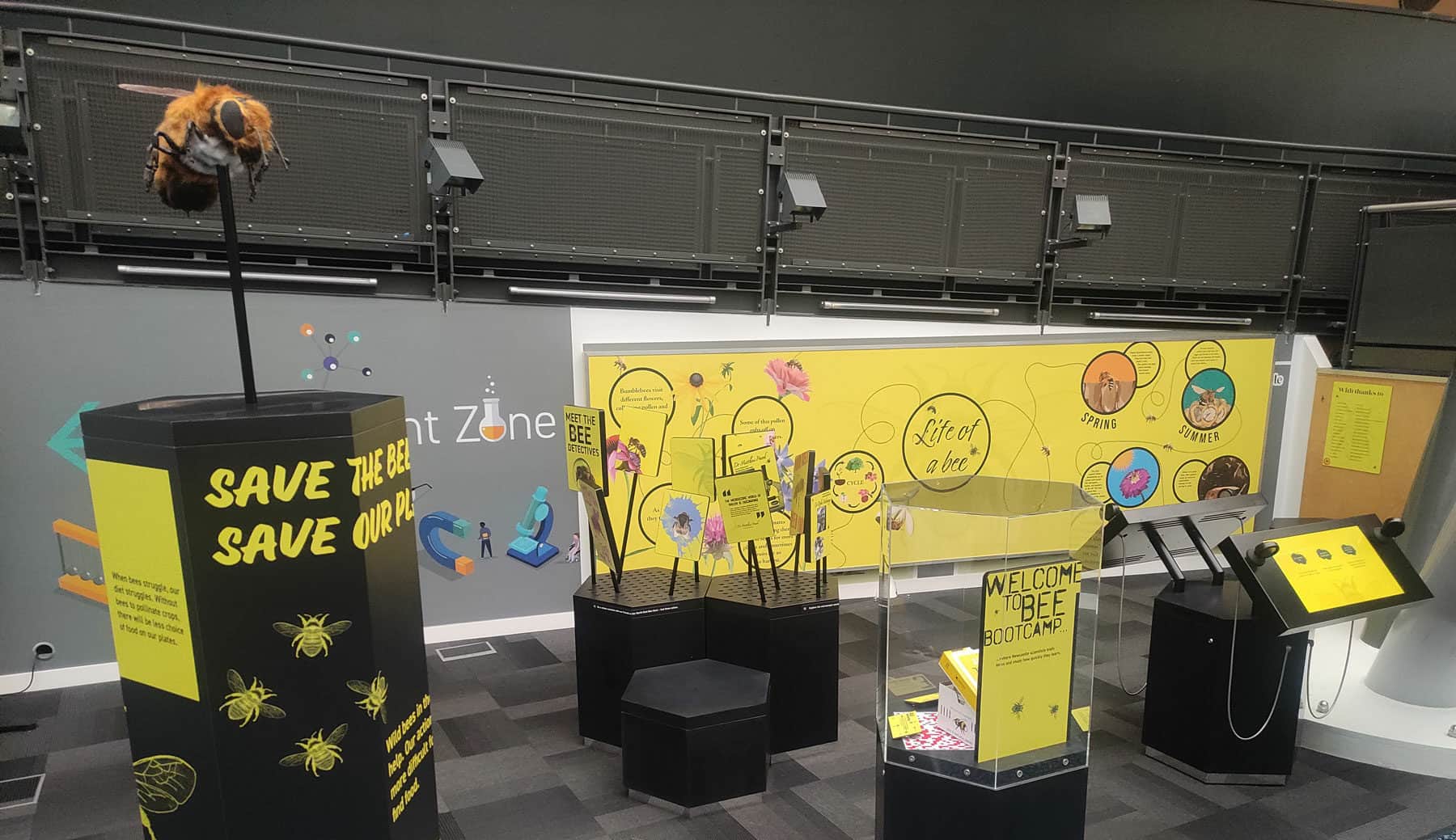
Dr Matthew Pound, associate professor in physical geography at Northumbria University contributed to ScienceNow! Life’s contemporary science hub. Here, Matthew shares details about his research and the role it plays in helping us understand environmental and climate change.

Matthew said: “My research uses pollen and other organic microfossils to understand environmental and climate change. At the moment my biggest project is Fungi in a Warmer World that aims to answer “how might fungi respond to warmer than modern climates?”. To try and answer this, we are using a geological warm period from 15 million years ago and extracting pollen and fungal remains from rocks dated to this interval. From these we are documenting past fungal diversity and ecology to see how this differs from today.
“As any hayfever sufferer knows, pollen is pretty much everywhere during the spring and summer. Estimates suggest that a mature pine tree will produce nearly a kilogram of pollen over a two week period! All this airborne pollen gets washed out of the atmosphere and into lakes, bogs and the oceans. It then accumulates in sediment that can, when conditions are right, enter the rock record by being lithified. So it’s possible to collect pollen from today by using traps, from recent sediments (last 10,000 years – yes, recent!) and right the way back to the origin of plants 470 million years ago.
“As a discipline we are known as palynologists (from palynology – the science of sprinkling, which refers to the dust-like qualities of what we study). It is relatively straightforward to study modern pollen, you simply need a microscope with x100 (or x400 for a better view) magnification. If the pollen can be treated to remove the cells on the interior and the coatings on the exterior then the view becomes more spectacular.
“Tiny planets ornamented with columns or spines, or with surfaces composed of, fingerprint-like or net-like patterns. To do this we treat the pollen to a spa day, either using enzymes or chemicals to clean and beautify. When looking for pollen in sediments or rocks, the spa treatment becomes more like cosmetic surgery! Strong acids are used to remove minerals, residues are washed through sieves and dense liquids are used to separate the organic from the inorganic. All of this effectively undoes the process of deposition and concentrates the pollen into a sample that can be easily examined under the microscope.
“In this way we can extract records of pollen from peat bogs that tell us about vegetation and human land use over the last 10,000 years, we can extract cores from deep lakes to understand how trees responded to the glacial events, and dissolve coal from 15 million years ago to document fungal diversity in a warmer than modern world. It is also possible, if one is inclined, to extract the pollen from hedgehog poo. But that is another, very smelly, story….
“How does this all relate back to bees? Well as well as being wind-pollinated and producing vast quantities of pollen that is emitted into the atmosphere, a huge number of plants have opted for a more precise pollination strategy by using animals. Bees, as important pollinators, collect nectar and pollen from flowers (and sometimes break the rules by stealing from wind-pollinating plants) and not all of this pollen makes it to the next flower to ensure reproduction.
“A lot of pollen is collected and consumed by bees as an important source of fats, proteins and nutrients. Nectar is mainly sugar and water and that is not the basis for a healthy diet! As a palynologist, I can examine the pollen collected from bees (either washed off their bodies, extracted from dissection or out or bee products) to understand what they are foraging on in the environment. This is easiest with the colourful little pollen loads you might have seen on the back legs of honey bees or bumblebees – these are literally thousands of pollen grains glued together with a little nectar. These reveal what plants the bees use to raise their young from larval stages to adulthood.
“With honey bees, it is also really easy to extract the pollen from honey. Honey is just another sediment (albeit tastier than putrid mud from the bottom of a lake) and a little hot water dissolves the sugar component and leaves behind the pollen. This pollen then tells us where the honey bees were getting their nectar from. Combined with the pollen loads we can then get a full picture of what plants bees like to forage on. In turn we can then make more informed decisions on planting for pollinators.
“We can all do our bit to help wild bees. For instance, the more flowers on the landscape, the more food is available for wild bees. These can be annuals, perennials or trees. A formal garden on the scale of a grand country estate, or a single pot. Most flowers will be visited by some form of pollinator. Never underestimate the importance of trees for pollinators as well. We know for honey bees that Rowan, Lime, Willow and Maple are all used. For other pollinators, stay tuned! We have a PhD student researching this at the moment.”
Twitter: Matthew Pound
